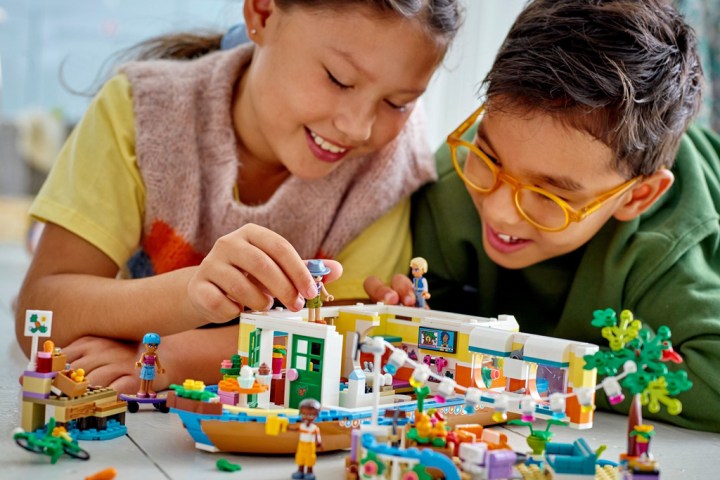It’s 10 years since LEGO Friends was introduced as a theme to attract girls to the LEGO brick and today it’s seeking to appeal to everyone – find out how the long-running theme has changed in the past decade.
In 2012 the LEGO fandom debated a newly introduced theme. It was blamed for stereotyping, labelled as a girl’s only toy and wrapped up in bright pink and purple. Friends was not welcomed by all LEGO fans. Yet 10 years on it has become an evergreen theme that has diversified and has enjoyed continued success. Why was Friends created? Why was it met with any hostility? And how has Friends made it to its 10th anniversary?
Join Blocks, the LEGO magazine for fans, as we take a brief tour around the history surrounding Heartlake City and its cast of Friends characters.

LEGO Friends was specifically created to be marketed at girls. From statistical evidence the LEGO Group found that most of the consumers, around 70%, for its products were boys. Seeing this gap in the market that LEGO sets weren’t filling, the design team conducted several years of market research, testing and retesting sets aimed specifically for girls. What they found was a disengagement with traditional LEGO sets – girls wanted to see themselves represented and have different opportunities for role play.
So, enter LEGO Friends. It had a completely different aesthetic to other LEGO themes, boasting new colours including lavender, new pieces and the most dramatic difference of them all; mini-dolls. Mini-dolls polarised LEGO fans, and to some extent still do. They were taller than minifigures, making them easier to pose and play with for children. Mini-dolls also came with rubber rather than plastic hair pieces, which led to a new range of hairstyles and customisation options in the form of bows or flowers.
Blocks celebrates 10 years of Friends with an exclusive interview in the next issue. To get the LEGO magazine for fans every month – at a discount and earlier than the shops – order a 12-month or 24-month subscription. Direct debit payment options are available too; to find out more get in touch via subs@silverbackpublishing.rocks.

What about those initial wave of sets? Well there was a riding camp, which introduced the cute Friends horse mould. Then Stephanie had her own bright pink convertible. Emma was a beautician running her own beauty parlour. Most of the early criticisms about Friends were well justified, as the first sets were the stereotypical types that could easily be found in other girls’ toys at the time, like Barbie or Polly Pocket. Many fans didn’t think this clear gender division was right, and that LEGO sets should be for everyone, no matter the theme. Many more people than those who vocalised online bought the products, to the extent that Friends sold double the number of sets it was projected to.
The gender stereotypes were also perpetuated in the characters’ appearances and personalities. Minifigures had always come with trousers or dresses, while Friends introduced skirts, along with a lot of pink outfits. There were also no guys inhabiting Heartlake City back in 2012. Mia was animal obsessed, Marie liked baking and Andrea wanted to be a pop-star. The LEGO Group were only reiterating real-life gender stereotypes, which is frustrating as girls should be encouraged to pursue what they want and not have to meet outdated societal expectations.
Which LEGO themes paved the way for LEGO Friends?

So, considering all this controversy, how did Friends survive? Well, LEGO Friends changed and still is changing. In 2017 there came a literal snowstorm of winter inspired sports sets, including skiing, ice-skating and sledding. Olivia got her own science lab, bigger than her 2012 workshop. Friends began shaking off its stereotypes and embracing a much more diverse range of topics in sets.
The changes didn’t end there. In 2018 the Friends cast of Mia, Stephanie, Olivia, Andrea and Emma all got a makeover. The characters became much more inclusive and diverse, with more varied skin-tones, outfits and eye-colours.

The best elements from 10 years of LEGO Friends
Looking at the new Friends sets for 2022 there are animal rescue models, a multicultural food festival, wheelchair users and even guide dogs. Friends has gone from following toy trends around girls to one of the most inclusive of all LEGO themes. It began as something for girls, yet has evolved into a theme that aims to be enjoyed by everyone in the future.
Remember to check out Blocks subscription deals for the best and easiest way to get your monthly LEGO magazine.

